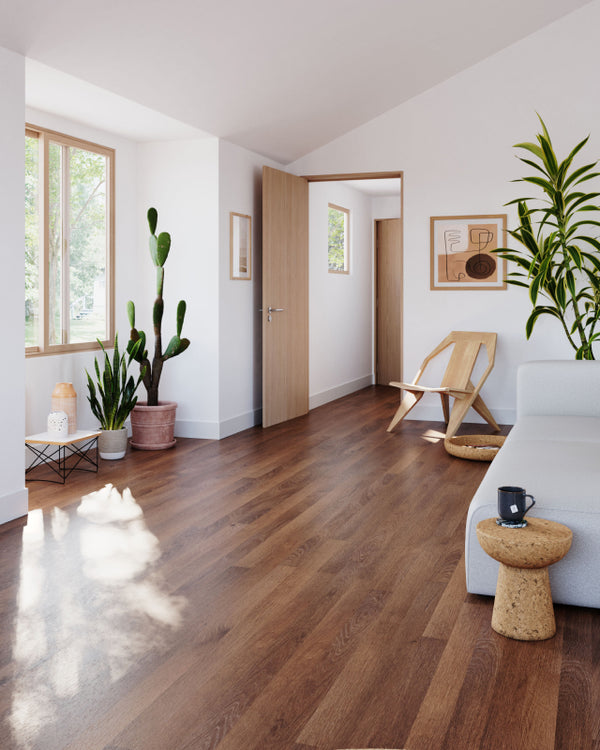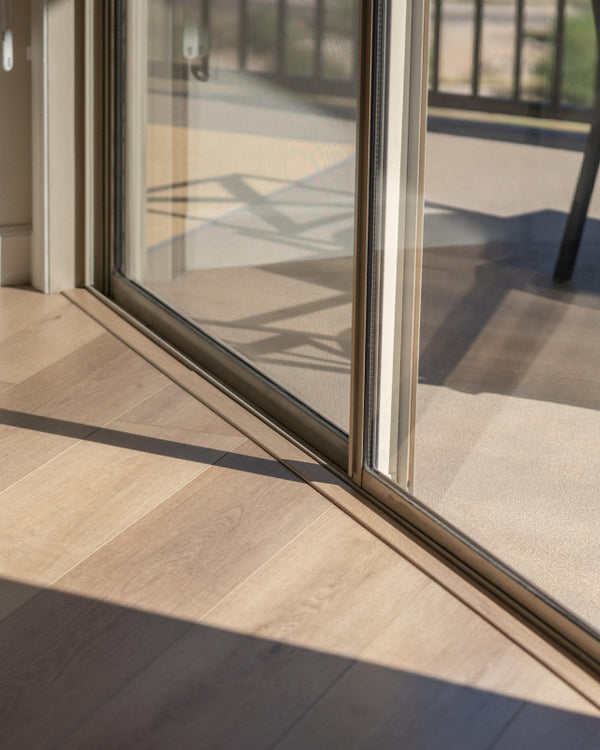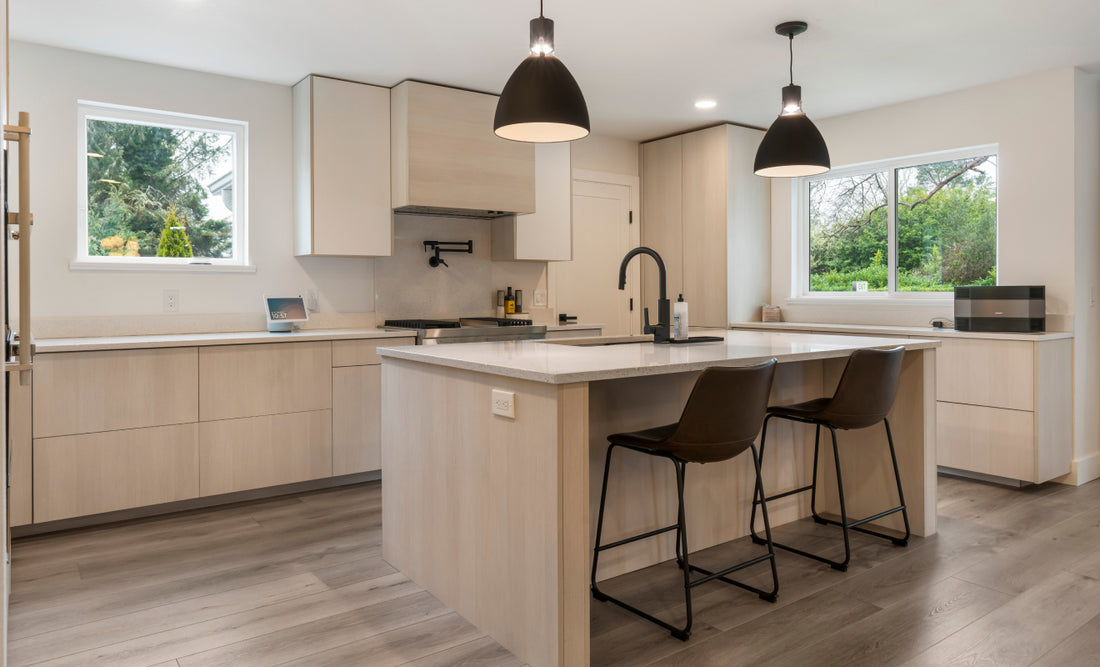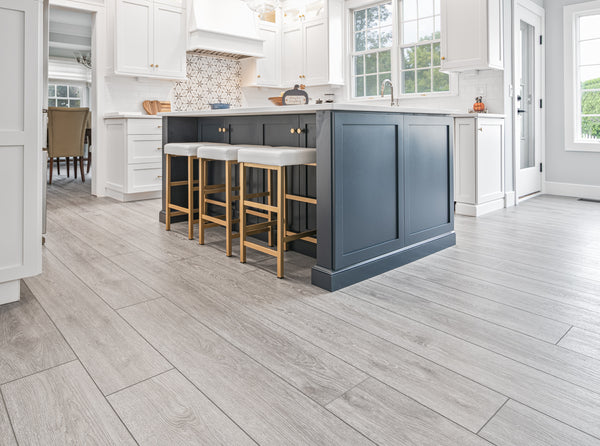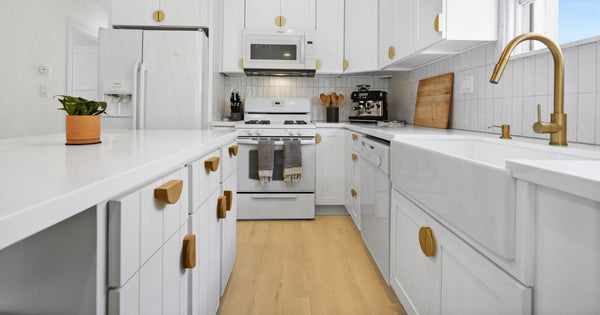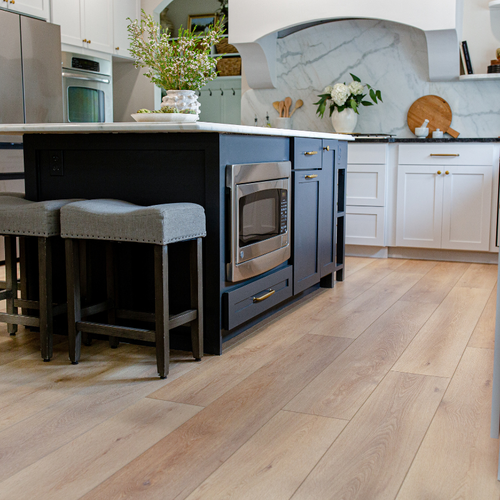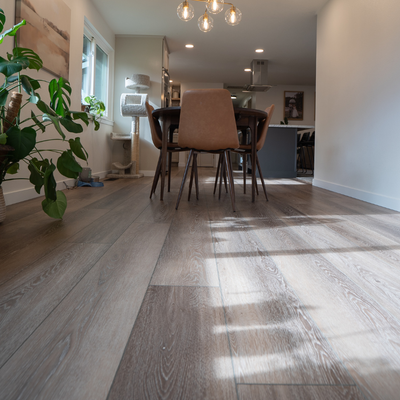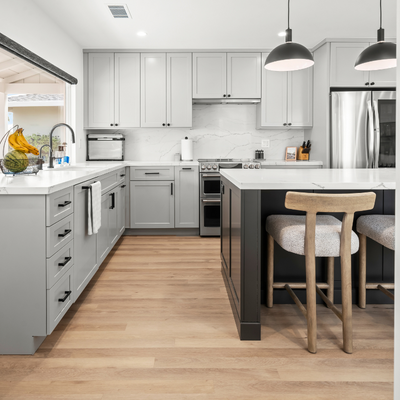Choosing the right color for your kitchen floors can significantly impact the overall look and feel of your space. With so many options available, it can be overwhelming to narrow down your choices. Let’s cover some design trends and tips to help you make the best decision for your kitchen floors.
Understanding the Importance of Color in Kitchen Design
The color of your kitchen floors plays a crucial role in setting the tone for the entire space. It can create visual harmony, enhance natural light, and even influence mood.
Color has a psychological impact; for instance, warmer tones like reds and yellows can evoke feelings of warmth and energy, while cooler tones like blue or green bring about calmness and serenity. Therefore, choosing the right hue is a reflection not only of style but also of the ambiance you wish to create in your kitchen.
Factors to Consider When Choosing Floor Colors
Consider the size of your kitchen, your existing decor, and your personal style. These elements can guide you towards the right color palette that complements your home.
For smaller kitchens, lighter shades can create an illusion of space and openness. Conversely, dark colors can make a large kitchen feel more intimate. Think about how the floor color interacts with the space’s lighting, and whether it will feel too light or too dark for your personal preference.
You’ll also want to consider the existing decor. Transitional styles may harmonize beautifully with different color combinations, while contemporary designs might favor bold, striking colors that stand out. The key lies in balancing your personal style preferences with the overall look of your home.
Popular Color Trends for Kitchen Floors
From neutral tones to bold shades, discover the current trends in kitchen floor colors that can inspire your decision and add character to your kitchen.
In recent years, gray has emerged as a favorite choice for kitchen floors, valued for its versatility and modern aesthetic. Pairing gray with white cabinetry creates a fresh, contemporary look, while deeper shades can add sophistication and warmth. Try the Modin LVP Grey Sample Kit to explore grey-toned floors. You might also like Lyon from the Silvan Resilient Hardwood Collection.
Another trend gaining traction is the use of earthy tones like terracotta and light brown, reminiscent of natural materials. These colors provide a welcoming atmosphere and blend seamlessly with rustic or farmhouse designs. Try the Modin LVP Medium-Brown Sample Kit if you're trying to find the right color for this style. You might also like Norde or Anza from the Silvan Resilient Hardwood Collection.
For those seeking a dramatic flair, deep brown or charcoal are increasingly popular choices that offer a striking contrast against lighter kitchen elements. These bold colors not only add personality but can also create a sense of depth and dimension. Try the Modin LVP Dark Sample Kit to find the right dark-tone flooring.
Matching Flooring Colors with Your Cabinets and Walls
Finding a color that meshes well with your kitchen cabinets and walls is essential for achieving a cohesive look.
One strategy is to use a color wheel to identify complementary shades. For instance, pairing warm wooden cabinet finishes with cooler floor colors can create an interesting contrast that adds depth and interest to the space.
Consider the finish of your cabinets and the style of your walls. Matte cabinets often pair well with textured floor tiles, while glossy finishes may look more striking against smooth floor materials. The synergy between these elements can define the room's character.
Finally, don’t hesitate to play with accents. Adding a pop of color through kitchen rugs or decor can energize the space, while ensuring the flooring remains a neutral backdrop allows for flexibility in styling as trends change.
Testing Color Samples in Your Kitchen
Before making a final decision, it's crucial to test color samples in your kitchen space. Evaluate colors in different lighting situations to see how they will truly appear.
When testing samples, observe them at different times of the day to gauge how natural and artificial lighting affects their appearance. A color might appear different under your kitchen lights or during sunny afternoons.
You’ll also want to examine samples against existing kitchen elements like countertops and backsplashes. This side-by-side comparison allows you to visualize the overall look and identify any potential clashes before making a commitment.
Maintaining Your Kitchen Floors: The Impact of Color
Some colors show dirt and scratches more easily than others. Consider maintenance needs when selecting a floor color to ensure it stays beautiful over time.
In terms of material, textured surfaces can be more forgiving with dirt compared to smooth tiles, which require more upkeep. Choose a finish that suits your lifestyle and is practical in terms of maintenance.
Choosing the Right Floor for Your Kitchen
Selecting the right color for your kitchen floors involves considering your kitchen's style, the amount of natural light it receives, and how you want the space to feel. By taking the time to experiment with samples, you can find the perfect fit for your home. If you ever have any questions about choosing the right flooring, get in touch with our team of experts! Give us a call at 1-800-700-8122 or chat with us live on the site!
